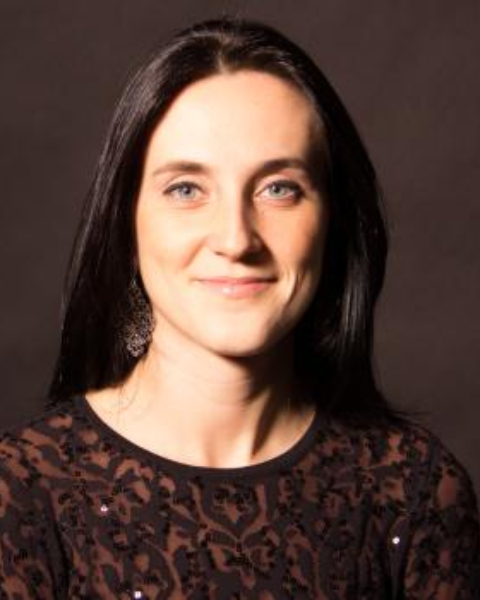QP 25 - Phys 13: Clinical Data and Dose Evaluation
1145 - Institution Volumetric Modulated Arc Therapy Total Body Irradiation Technique Using Autoplanning Scripts: 4 Year Experience
Wednesday, October 2, 2024
12:45 PM - 12:50 PM ET
Location: Room 144

Nataliya Kovalchuk, PhD
Stanford Cancer Institute Palo Alto
Palo Alto, CA
Presenter(s)
N. Kovalchuk1, E. A. Simiele2, C. Hui3, L. Skinner3, Y. Yang1, M. S. Binkley3, R. T. Hoppe3, and S. M. Hiniker3; 1Department of Radiation Oncology, Stanford University, Stanford, CA, 2University of Alabama Birmingham School of Medicine, Birmingham, AL, United States, 3Department of Radiation Oncology, Stanford University School of Medicine, Stanford, CA
Purpose/Objective(s): To report on the 4-year experience with implementation of the VMAT TBI autoplanning scripts at our institution. The scripts were made publicly available and have been recently included on the COG ASCT2031 trial. Materials/
Methods: Hundred patients underwent VMAT TBI treatment at our institution from October 2019 to October 2023. Treatment planning utilized Eclipse Scripting API (ESAPI) autoplanning scripts for 90 out of 100 patients. Data on dosimetric indices, treatment characteristics, robustness of performing local and global isocenter shifts of 5 mm, and in-vivo measurements on the matchline was collected and analyzed.
Results: For all 100 patients the lungs, lungs-1cm, and kidneys Dmean were consistently spared to 59.8±4.6%, 43.1±6.4%, and 70.7±7.5% of the prescription dose, respectively. Gonadal sparing (Dmean=31.1±6.0%) was achieved for all patients with benign disease. The average PTV D1cc was 120.3±6.4% for all patients. PTV D1cc correlated with patient height and width (R2 = 0.62 and 0.53). Seventeen patients (17%) with height <116cm were treated with 3-isocenter VMAT only plans, 83 patients (83%) were treated with 3-4 isocenter VMAT plans in head-first-supine (HFS) position and 1-3 AP/PA plan in feet-first-supine (FFS) position. Custom-made rotational platform was used to change the patient orientation from HFS to FFS. For the first 10 patients, robustness evaluation showed that the PTV Dmax and lungs Dmean are insensitive to small positioning deviations between the VMAT isocenters (1.1±2.4% and 1.2±1.0%, respectively). The average matchline dose measurement indicated patient setup was reproducible (96.1±4.5% relative to planned dose). For the first 35 patients, treatment time, including patient setup and beam-on, was 47.5±9.5 min.
Conclusion: VMAT TBI offers advantages over conventional 2D TBI, including organ sparing and dose painting, accurate dose calculation and image-guided delivery. The automated scripts enable streamline planning (approximately 4-5 hours) with consistent plan quality.
Purpose/Objective(s): To report on the 4-year experience with implementation of the VMAT TBI autoplanning scripts at our institution. The scripts were made publicly available and have been recently included on the COG ASCT2031 trial. Materials/
Methods: Hundred patients underwent VMAT TBI treatment at our institution from October 2019 to October 2023. Treatment planning utilized Eclipse Scripting API (ESAPI) autoplanning scripts for 90 out of 100 patients. Data on dosimetric indices, treatment characteristics, robustness of performing local and global isocenter shifts of 5 mm, and in-vivo measurements on the matchline was collected and analyzed.
Results: For all 100 patients the lungs, lungs-1cm, and kidneys Dmean were consistently spared to 59.8±4.6%, 43.1±6.4%, and 70.7±7.5% of the prescription dose, respectively. Gonadal sparing (Dmean=31.1±6.0%) was achieved for all patients with benign disease. The average PTV D1cc was 120.3±6.4% for all patients. PTV D1cc correlated with patient height and width (R2 = 0.62 and 0.53). Seventeen patients (17%) with height <116cm were treated with 3-isocenter VMAT only plans, 83 patients (83%) were treated with 3-4 isocenter VMAT plans in head-first-supine (HFS) position and 1-3 AP/PA plan in feet-first-supine (FFS) position. Custom-made rotational platform was used to change the patient orientation from HFS to FFS. For the first 10 patients, robustness evaluation showed that the PTV Dmax and lungs Dmean are insensitive to small positioning deviations between the VMAT isocenters (1.1±2.4% and 1.2±1.0%, respectively). The average matchline dose measurement indicated patient setup was reproducible (96.1±4.5% relative to planned dose). For the first 35 patients, treatment time, including patient setup and beam-on, was 47.5±9.5 min.
Conclusion: VMAT TBI offers advantages over conventional 2D TBI, including organ sparing and dose painting, accurate dose calculation and image-guided delivery. The automated scripts enable streamline planning (approximately 4-5 hours) with consistent plan quality.
